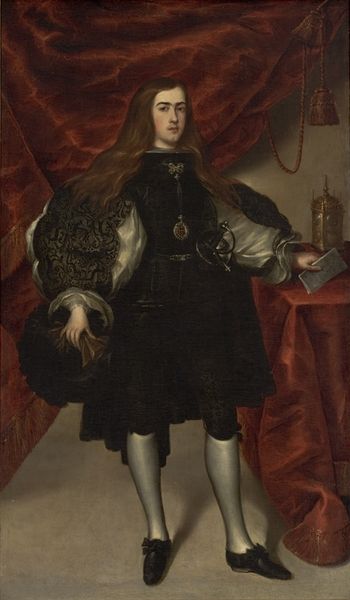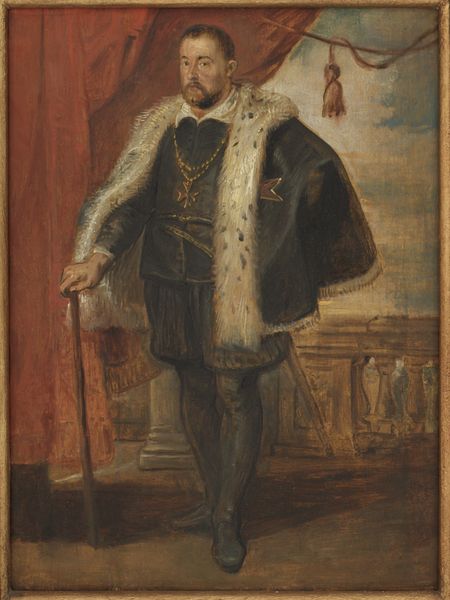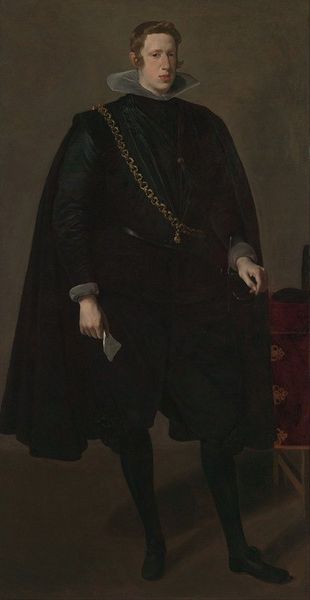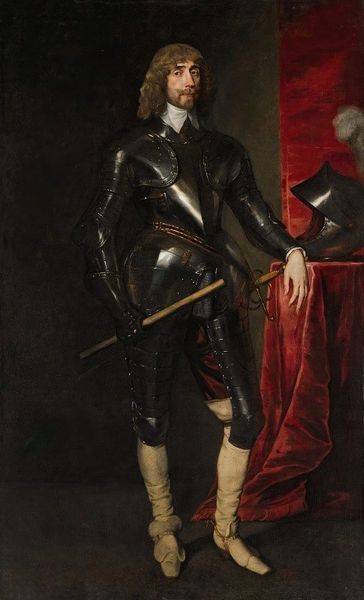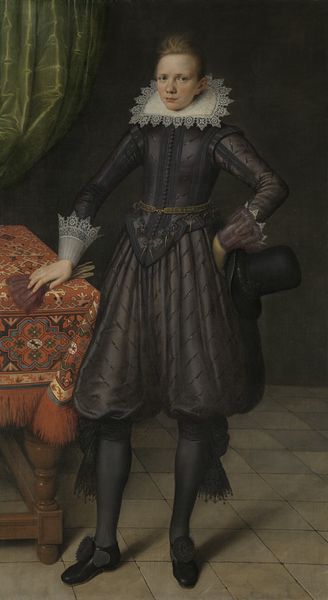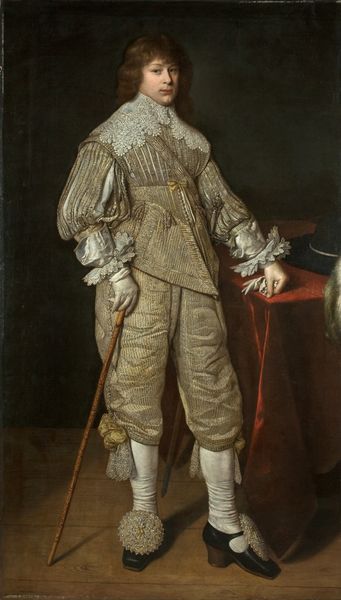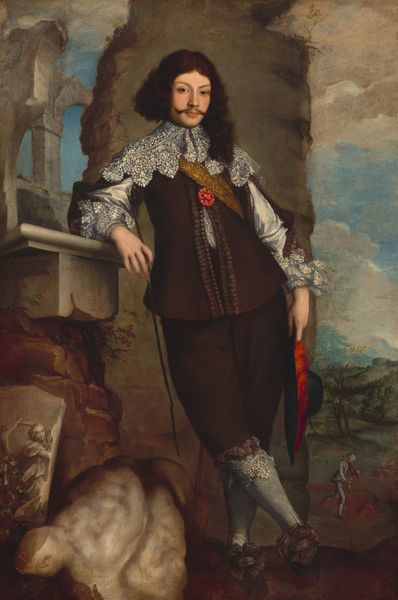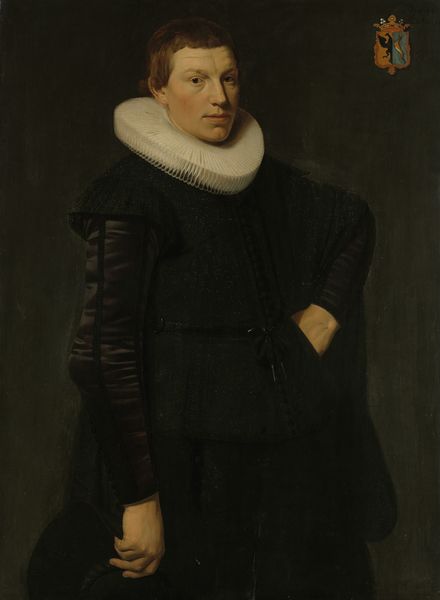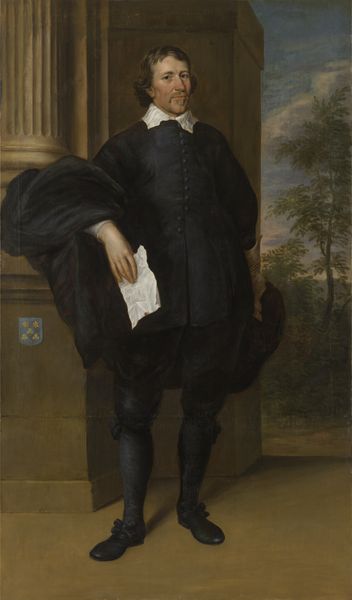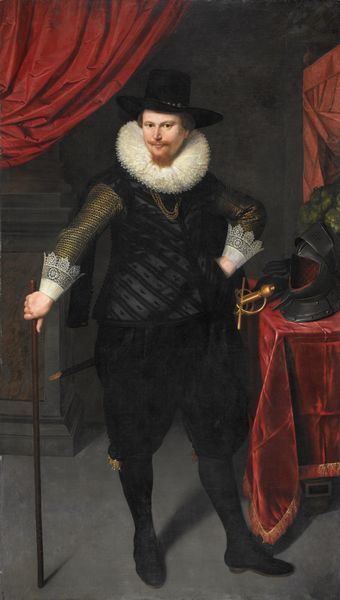
A Knight of Alcántara or Calatrava 1650 - 1655
0:00
0:00
painting, oil-paint
#
portrait
#
baroque
#
painting
#
oil-paint
#
figuration
#
history-painting
Dimensions: Overall, with added strips, 77 x 43 3/4 in. (195.6 x 111.1 cm); original canvas 77 x 38 1/2 in. (195.6 x 97.8 cm)
Copyright: Public Domain
Editor: Here we have "A Knight of Alcántara or Calatrava," painted between 1650 and 1655 by Bartolomé Esteban Murillo. It's an oil painting currently housed at the Metropolitan Museum of Art. I'm immediately struck by how the dark colors contrast with the stark white of his stockings, creating such a formal and upright mood. What do you see in this piece? Curator: Well, let's consider the interplay of light and shadow. Murillo masterfully uses chiaroscuro to sculpt the figure, drawing our attention to the face and hands. Observe the textures—the delicate lace versus the smooth velvet. These contrasting materials and the manner in which the light falls across them, articulate a hierarchical relationship between surfaces that demands close scrutiny. Editor: That’s a great point about the light and texture. How do you think those formal elements contribute to the meaning of the work? Curator: Notice how the light subtly catches the ornament he wears around his neck. This element, while small, serves as a crucial focal point, signifying status. The arrangement of the knight's posture, combined with his unwavering gaze, imbues the portrait with a sense of dignity and controlled power. What, perhaps, is being controlled, or suppressed? It begs questions of psychology that the artist perhaps sought to ask of us. Editor: So it's through these design elements and artistic techniques, the formal qualities, that we come to understand the portrait’s message about the subject's character and standing in society? Curator: Precisely. By carefully analyzing the formal properties of the painting—light, texture, composition—we can decipher the artist's intended meaning. Editor: That's fascinating! I never thought about interpreting a portrait in that way, it provides a fresh and very exciting approach. Curator: Indeed. Approaching any piece with an eye for structure can lead to deeper appreciation.
Comments
No comments
Be the first to comment and join the conversation on the ultimate creative platform.



